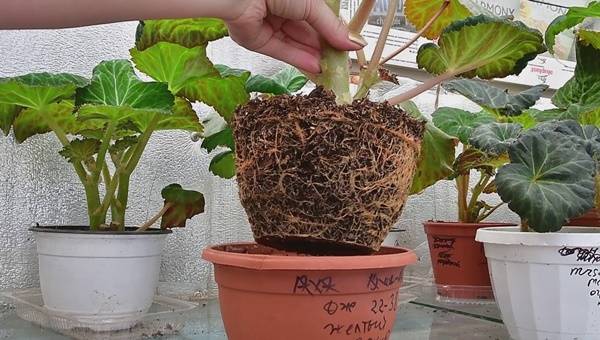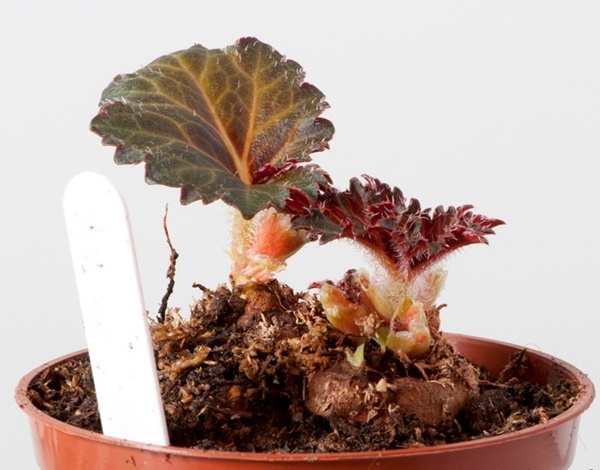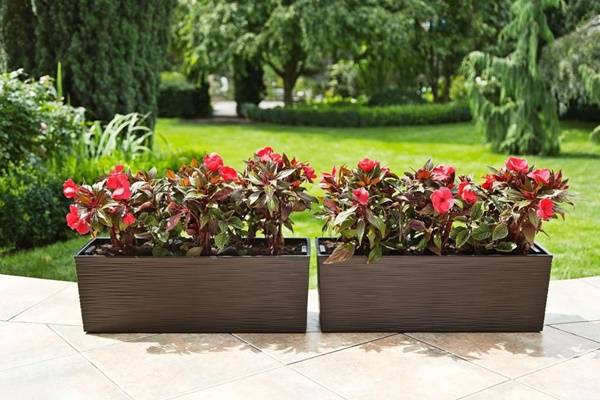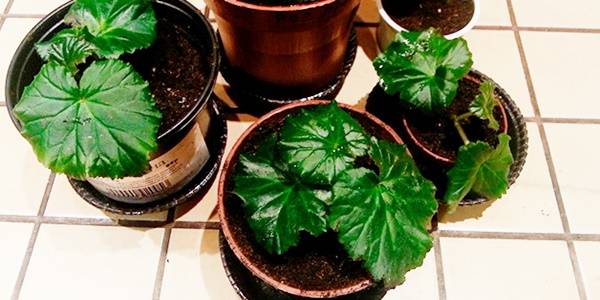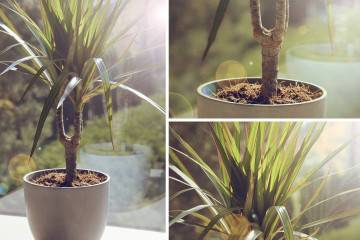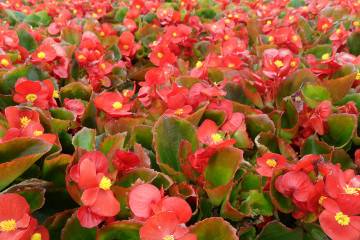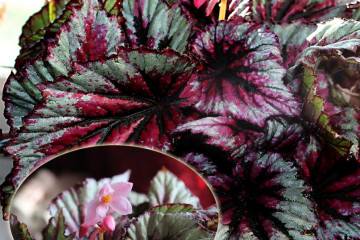How to transplant Begonia to a new location
Content:
There is no difficulty in growing and caring for begonias. This plant feels great in indoor conditions. Decorativeness combined with simplicity made the plant widespread among flower growers. But literacy is also necessary when growing it. The question of how to transplant begonia is asked not only by beginners, but also by experienced flower growers.
When do I need a transplant?
The plant really needs a transplant. The roots gradually fill the container where it lives as it grows. There are several cases when a transplant is required:
- roots emerge from the drainage holes, extending beyond the pot;
- the plant is sick, depressed, loses its decorative effect. Leaves turn yellow, fungal lesions are found;
- the appearance of pests in the ground, including the likelihood of laying eggs;
- the old pot has fallen into disrepair.
In some cases, the plant had not yet reached a large size, but complete filling of the pot with roots was found. This means that the time has come to change the container. Transplantation of begonia that has not yet mastered the entire capacity and is healthy is not performed.
There is another case where a pot replacement is necessary. The flower is provided with another pot and fresh soil. The begonia plant needs a transplant after purchase. It is not recommended to rush with the procedure, but the plant will wither sooner or later in a store container.
How often to replant begonia?
The transfer of the plant from the old container is planned with the onset of early spring. This choice of the season is the most correct, because the growth processes are just beginning to intensify. At this time, the indoor flower with the least loss will undergo the procedure and recover.
Experienced growers believe that changing the container and soil should be made an annual event. This is due to the fact that the soil depletes over time. The plant is given the opportunity to restore its composition, replenishing it with the necessary nutrients. It is better not to forget about the regularity of the procedure in order to avoid death.
There is another important question: is it possible to transplant the begonia blooming now? This should be done only at the end of the flowering process. Then the procedure will take place safely, otherwise the flowers will begin to fall off. There is a possibility that the plant will lose its decorative qualities, taking on a painful appearance.
How to choose a pot and soil?
A competent choice of capacity and soil will be the key to health for begonias. This is the most important factor in the question of how to transplant begonia. You need to take care of the availability of everything you need before the transplant event. The list of components is as follows:
- a suitable pot should not be oversized. Young begonias are transplanted into containers that are 3 or 4 cm larger than the previous ones in diameter;
- the material of the container is important. They prefer ceramics, although plastic is also suitable for creating the necessary conditions;
- deciding how to plant begonias, for each part, take containers 2 or 3 cm smaller than the previous one. When separating the outlets, the original plant is left in the same container. Technological pots are 6 by 6 cm in size;
- potting soil of suitable quality. This is a mixture of peat, turf, humus and ordinary earth in the same proportions;
- drainage as the basis of comfort. They take expanded clay, gravel, pieces of foam and other materials.
Having prepared the listed components of the process, they begin to transfer the plant to a new place of residence.
Soil disinfection
In the question of how to properly transplant begonia at home step by step, there is one caveat. It is important to decontaminate the soil, which will ensure that there are no pests that can attack the plant from the soil infested with larvae. It is convenient to use an ordinary microwave oven for the procedure.
Preparing for transplant
The ceramic (or other) pot available in the house is thoroughly washed. It is recommended to soak the clay version in water for a day, and then scald it with boiling water. The plastic one needs to be cleaned under running water with detergent. And also at the stage of preparation, soil and drainage must be available.
Transplant methods
Two methods are possible: full and partial transplant. The first case relates to the purchase of a new plant or when diseases or pests are found. Actions should be carried out as follows:
- expanded clay is poured onto the bottom of the prepared pot;
- pouring charcoal in the next layer, it will be possible to prevent root decay;
- drainage is covered with 2 cm of soil;
- it is easy to remove the begonia from the previous container, if you water it, turn it over or tilt it, tap it a little;
- the old soil is shaken off. Washing the roots in a weak solution of potassium permanganate does not hurt. Damaged and dead parts are removed;
- the plant is placed in a new container, holding the stem, covered with fresh soil. The root collar is not buried.
It remains to lightly compact the soil. Although, when watering, shrinkage will occur by itself, after which you only need to fill up the earth. The transfer method is applied to a healthy plant in a larger container. This is a sparing regime. Having rearranged the begonia together with the earthen lump in another pot, they add fresh soil to the free space. This method only partially renews the soil.
Care after plant transplant
Correctly caring for begonia, you need to take into account its photophilousness. Active growth will be observed under intense but diffused lighting. Immediately after transplanting, the pot is placed on the west or east window. Other rules are outlined in the following list:
- elimination of drafts;
- the temperature cannot be too low: from + 15 in winter and + 18-20 degrees in summer. Its stability is important, the absence of drops;
- upon detection of diseases, they immediately begin treatment, otherwise the plant can be lost;
- additional lighting will be required in winter;
- watering is done competently, to which the flower culture responds well. Only soft water is used, and excess water is promptly removed from the pallet;
- top dressing applied on time (2 times a week) will help strengthen the immune system against diseases. The store has an assortment of fertilizers for begonias or indoor flowers. The dose is halved.
The irrigation scheme requires special attention. Its frequency in the summer should be at least 2 times a week, and in hot weather - every day. With the onset of autumn, by October, the soil is moistened as its top layer dries. In winter, the frequency does not exceed twice a week. Since March, the amount of moisture has been increasing. It is better not to spray the plant, unhealthy spots may appear. Maintain moisture by placing the pot on wet peat or pebbles.
Transfer after purchase
The rules for replacing the container with which the plant was purchased are similar to those stated above. Landing can be done immediately. But it is not recommended to rush too much. The best solution would be to wait for two weeks or a month. And if flowering is observed, the procedure is prohibited until it ends.The size of the container is usually left the same.
Typical transplant errors
An unsuccessful event can lead to the death of the plant. The following errors are indicated:
- the size of the new container is incorrect. If the size is too large, the soil may acidify, the roots will deteriorate;
- the soil is heavy, its permeability is insufficient, there is a lot of peat. All this provokes stagnant water. Too much acidity (over 6.0) is also harmful;
- the root collar was deepened, although it should have been left in the same position. Then the plant will rot.
It will not take a home grower a lot of time and effort to transplant begonia. The most important thing is to take care of the roots. Otherwise, it will be quite difficult for the plant to take root in a new place. The creation of comfortable conditions is imperative, because only then will flowering occur.

